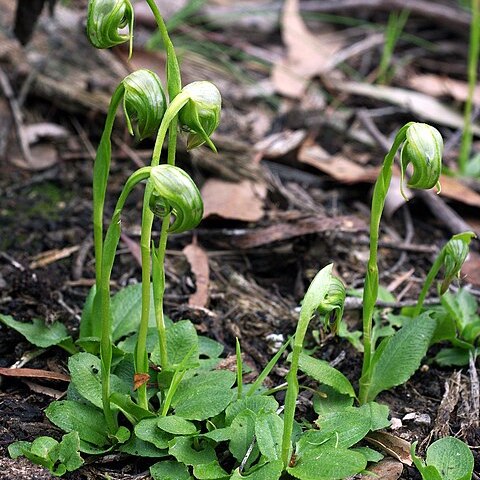Rosette leaves 3–6, ovate to oblong, 30–90 x 10–30mm, dark green, margins wavy to crinkled. Flower stem 40–30 tall. Flower strongly nodding, 18–25 x 10–14mm, shiny, translucent pale green with darker green markings, apex often reddish. Dorsal sepal of similar length to petals, shortly pointed, tip often recurved. Lateral sepals scabrous, loosely embracing galea and separated from petals by wide side gap. Sinus bulging in side view, deeply V-notched in front view. Free points projected forwards, tapered, 10–1 long, just extending above hood. Petals shortly pointed. Labellum curved in semicircle, protruding prominently from sinus, 14–18 x 4mm, green and brown, densely bristly, blunt.
A slender orchid. It forms a colony of plants and has tubers. At the base it has a ring of wavy edged leaves. These are oval and 4 cm long by 1.5 cm wide. There are 3-6 leaves. The flower is green and white. They occur singly on flowering stems 30 cm long. The hood is bent over. The tip is curved backwards. The flower is about 2.5 cm across.

